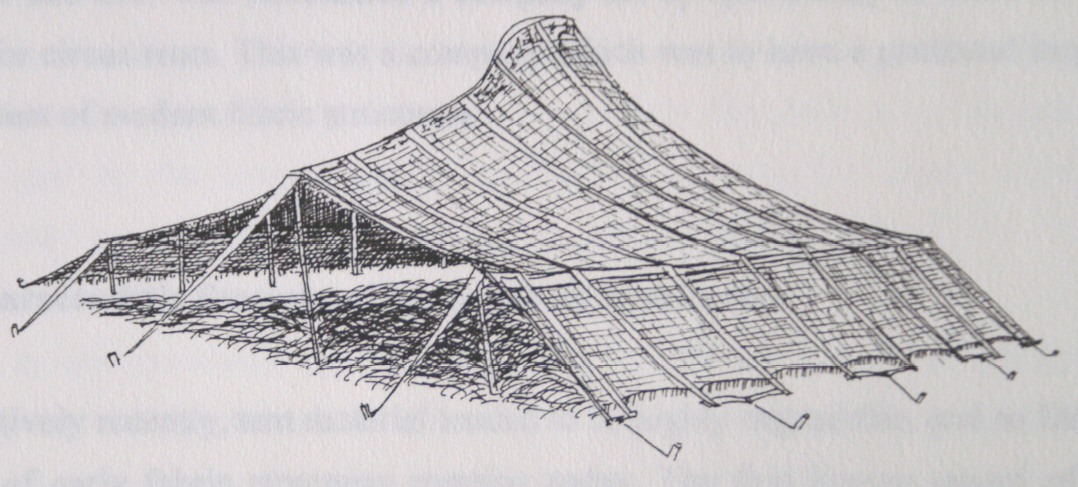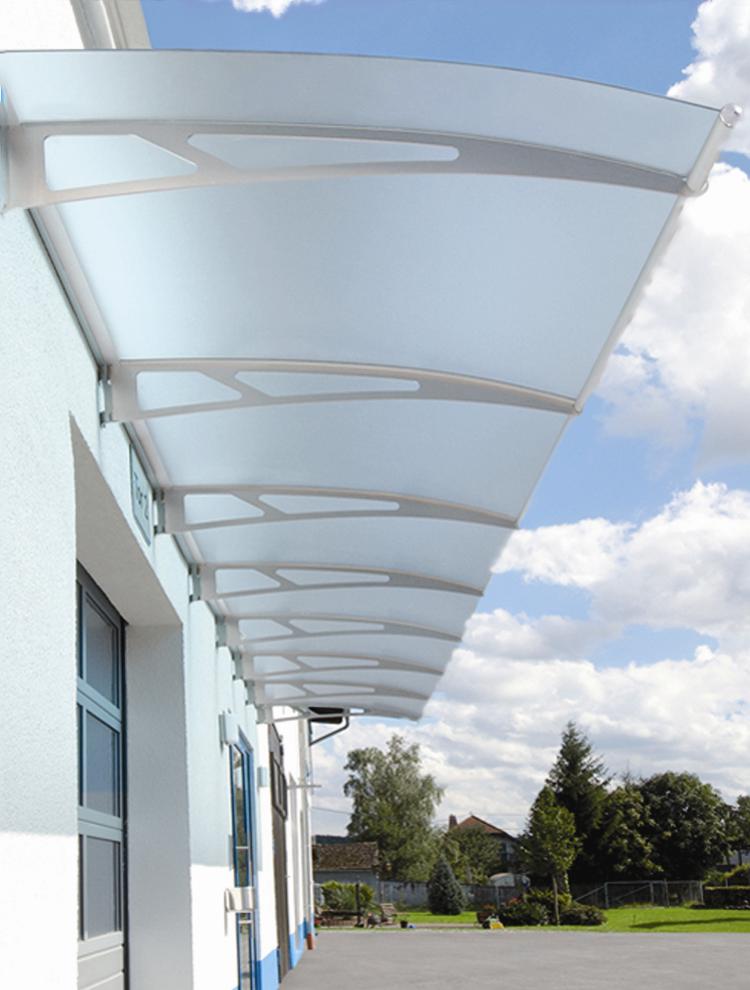Shelter

|
| Black tent |
Contents |
[edit] History
Very broadly, shelters provide physical protection from something that is potentially harmful.
Remains have been found of simple structures constructed from animal skins draped between sticks dating back over 40,000 years, and it is likely these were the first type of shelter constructed by humans.
Simple tents suited a nomadic lifestyle. Lightweight and easy to carry, they could be moved from place to place in harsh environments where it was necessary to keep on the move to stay alive. Where resources were more plentiful, it was possible to settle down and build permanent shelters in the form of huts. In intermediate environments, a whole range of composite structures developed, part tent, part hut, most notably the Yurt, a demountable hut, still in use in places such as Mongolia today.
This combination of a fundamental requirement for shelter, moderated by practicality and resource availability, still drives the design of our buildings today, and can be seen in as varied typologies as the Troglodytic architecture of sculptured hillside landscapes in Morocco, to the Eskimos’ igloos, to Malaysian tree-dwelling, African courtyard houses, and the English thatched cottage.
[edit] Function
Very broadly shelters might be required to provide:
- Privacy.
- Security.
- Cover from the sun, rain, wind, snow and so on.
- Control of temperature, air movement, humidity, air quality, noise and so on.
- A status symbol.
- A meeting point.
- Permanent or temporary accommodation.
[edit] Other types of shelter

|
| A bothy in the Scottish Highlands. |
- Air-raid shelter: used for protecting civilian and military personal from bomb attacks. They may be improvised from existing structures eg, London Underground tunnels or be specially designed.
- Animal shelter: provides a home (usually temporary) for abandoned or lost animals.
- Bivouac shelter (British: ‘bivvy’ for short): this is usually a temporary shelter of any lightweight construction used by mountain climbers or scouters. They may construct a bivouac shelter from branches and leaves. A bivouac sack often used by mountaineers and army personnel is a small, lightweight, waterproof bivouac shelter that may comprise a simple covering over a sleeping bag and can fit easily into a backpack.
- Blast shelter: provides protection from blasts and explosions from weapons.
- Bothy: a small shelter that has been restored from a ruinous condition to provide basic, temporary accommodation to passers-by, such as hill walkers. Usually unlocked, they are typically made of stone, have a pitched roof and are particularly common in the Scottish Highlands and other upland areas of the UK.
- Bus shelter: provides protection from wind and rain while awaiting the arrival of a bus.
- Canopy: An overhead roof structure that has open sides. Canopies are typically intended to provide shelter from the rain or sun, but may also be used for decorative purposes, or to give emphasis to a route or part of a building.
- Emergency shelter: provides temporary shelter for people when their homes have been partially or permanently affected by various phenomena including floods, earthquake, explosions, avalanches, social unrest, war and so on.
- Fallout shelter: provides protection from radiation such as that which might occur as a result of nuclear explosions or nuclear accidents.
- Homeless shelter: provides a temporary bed and washing facilities to those who might otherwise have to sleep on the streets.
- Refuge: a special cabin used in underground construction into which workers may retreat in the event of an emergency, eg a gas leak or rock fall, where they remain until help arrives. Refuges are usually stocked with oxygen, water and other basic provisions.
- Rock shelters: natural formations in cliffs where softer rock has been eroded over time to form a type of cave that may provide shelter from the elements.
- Ramada: a shelter with roof and no walls that is constructed from branches or bushes for the sole purpose of providing solar protection. Ramadas may be temporary or permanent and are found mainly in the southwestern USA. Modern varieties may also be built with commercially available construction materials.

|
[edit] Related articles on Designing Buildings Wiki
- Adobe.
- Cob building.
- Construction materials.
- Earthen construction.
- Emergency healthcare architecture in Brazil.
- Fabric structures.
- Green building.
- Managing and responding to disaster.
- Practical Building Conservation: Earth, Brick and Terracotta.
- Resilience.
- Roof.
- Sheltered area.
- Smoking shelters.
- Types of building.
Featured articles and news
One of the most impressive Victorian architects. Book review.
RTPI leader to become new CIOB Chief Executive Officer
Dr Victoria Hills MRTPI, FICE to take over after Caroline Gumble’s departure.
Social and affordable housing, a long term plan for delivery
The “Delivering a Decade of Renewal for Social and Affordable Housing” strategy sets out future path.
A change to adoptive architecture
Effects of global weather warming on architectural detailing, material choice and human interaction.
The proposed publicly owned and backed subsidiary of Homes England, to facilitate new homes.
How big is the problem and what can we do to mitigate the effects?
Overheating guidance and tools for building designers
A number of cool guides to help with the heat.
The UK's Modern Industrial Strategy: A 10 year plan
Previous consultation criticism, current key elements and general support with some persisting reservations.
Building Safety Regulator reforms
New roles, new staff and a new fast track service pave the way for a single construction regulator.
Architectural Technologist CPDs and Communications
CIAT CPD… and how you can do it!
Cooling centres and cool spaces
Managing extreme heat in cities by directing the public to places for heat stress relief and water sources.
Winter gardens: A brief history and warm variations
Extending the season with glass in different forms and terms.
Restoring Great Yarmouth's Winter Gardens
Transforming one of the least sustainable constructions imaginable.
Construction Skills Mission Board launch sector drive
Newly formed government and industry collaboration set strategy for recruiting an additional 100,000 construction workers a year.
New Architects Code comes into effect in September 2025
ARB Architects Code of Conduct and Practice available with ongoing consultation regarding guidance.
Welsh Skills Body (Medr) launches ambitious plan
The new skills body brings together funding and regulation of tertiary education and research for the devolved nation.
Paul Gandy FCIOB announced as next CIOB President
Former Tilbury Douglas CEO takes helm.






















